Watermelon (Citrullus lanatus) is one of the most refreshing and beloved fruits worldwide, cherished for its juicy, sweet flesh and hydrating properties. Growing watermelon at home is both rewarding and practical, allowing gardeners to enjoy fresh, organic produce without relying on store-bought fruits that may be treated with chemicals. Despite its reputation as a large-space crop, watermelon can be successfully cultivated in home gardens, patios, or even large containers with proper care and planning.
This guide outlines a comprehensive 6-step approach to growing watermelon at home, from selecting the right variety to harvesting and enjoying your sweet, homegrown fruits.
Step 1: Selecting the Right Watermelon Variety
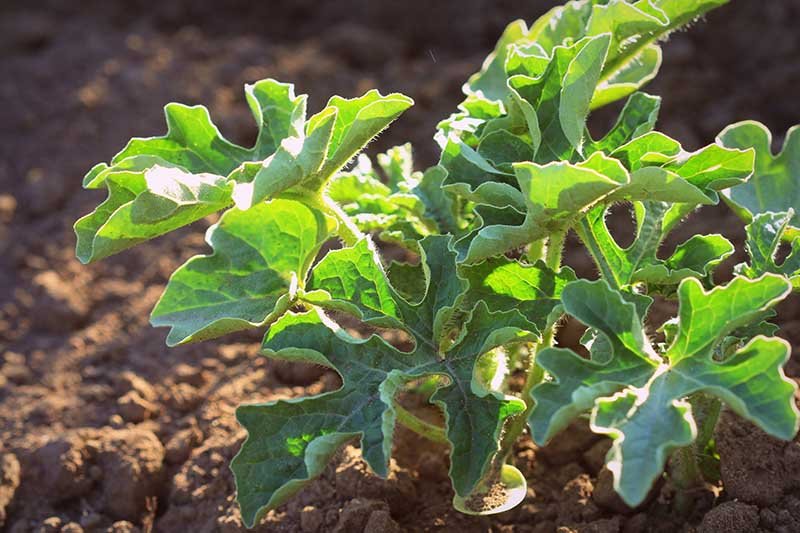
Choosing the appropriate variety is crucial for home cultivation. Watermelon varieties differ in size, taste, growth habits, and climate tolerance.
- Types of Watermelon:
- Small or Mini Watermelons: Varieties like ‘Sugar Baby’ or ‘Moon and Stars’ are ideal for container cultivation or small gardens. They grow compactly and produce sweet, bite-sized fruits.
- Medium-Sized Watermelons: Varieties such as ‘Crimson Sweet’ are suitable for home gardens with enough space. They are easier to manage and yield moderately sized fruits.
- Large Watermelons: Varieties like ‘Jubilee’ or ‘Charleston Gray’ require more space, typically suited for traditional backyard gardens.
- Climate Considerations:
- Watermelons thrive in warm, sunny conditions with daytime temperatures between 70–90°F (21–32°C).
- Choose heat-tolerant varieties for regions with long, hot summers.
- Disease-Resistant Varieties:
- Select varieties resistant to common diseases like powdery mildew, fusarium wilt, or mosaic virus for higher yield and lower maintenance.
Selecting the right variety ensures compatibility with your growing space, climate, and desired fruit size, resulting in healthier plants and sweeter harvests.
Step 2: Preparing the Growing Space and Soil
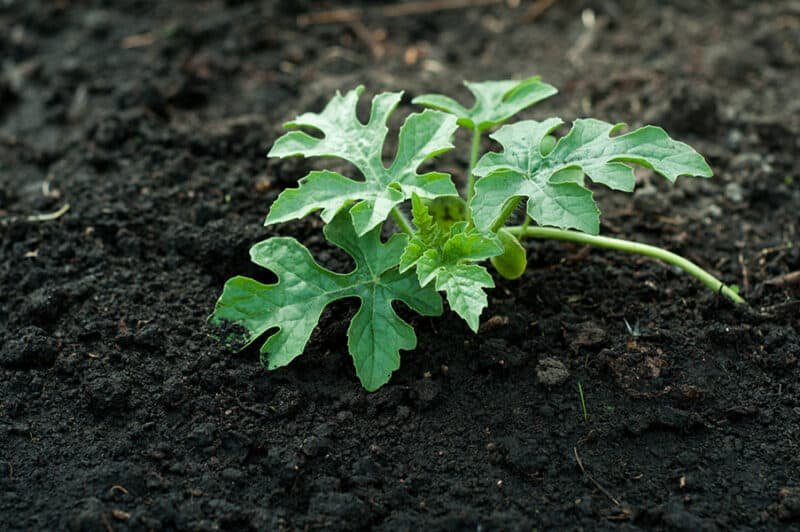
Watermelon requires well-prepared soil and sufficient space for healthy growth.
- Garden Bed Preparation:
- Choose a sunny location with at least 6–8 hours of direct sunlight daily.
- Watermelons need space to sprawl; traditional varieties require 6–8 feet between plants, while bush or mini varieties need 3–4 feet.
- Soil Requirements:
- Use loose, well-draining soil with a pH of 6.0–7.0.
- Enrich the soil with organic compost or well-rotted manure to provide essential nutrients and retain moisture.
- Avoid heavy clay soils, which can impede root growth and lead to waterlogging.
- Raised Beds or Containers:
- For small spaces or urban gardens, consider raised beds or large containers with a minimum depth of 12–18 inches.
- Ensure containers have drainage holes to prevent root rot.
Well-prepared soil and ample sunlight provide an ideal environment for watermelon roots to grow strong, supporting healthy vines and juicy fruits.
Step 3: Planting Watermelon Seeds

Planting watermelon seeds correctly is essential for optimal germination and growth.
- Seed Preparation:
- Soak seeds in water for 24 hours to improve germination rates.
- Use fresh seeds from reputable suppliers for best results.
- Direct Sowing:
- Sow seeds 1 inch deep in mounds or rows.
- Space seeds 2–3 feet apart for small varieties and 6–8 feet for traditional varieties.
- Starting Indoors:
- In cooler regions, start seeds indoors 3–4 weeks before the last frost date.
- Use seed trays with a light, moist potting mix.
- Transplant seedlings outdoors after 2–3 weeks, once the soil has warmed sufficiently.
Proper planting and spacing ensure strong seedlings, healthy vine growth, and reduced competition for nutrients and water.
Step 4: Caring for Watermelon Plants
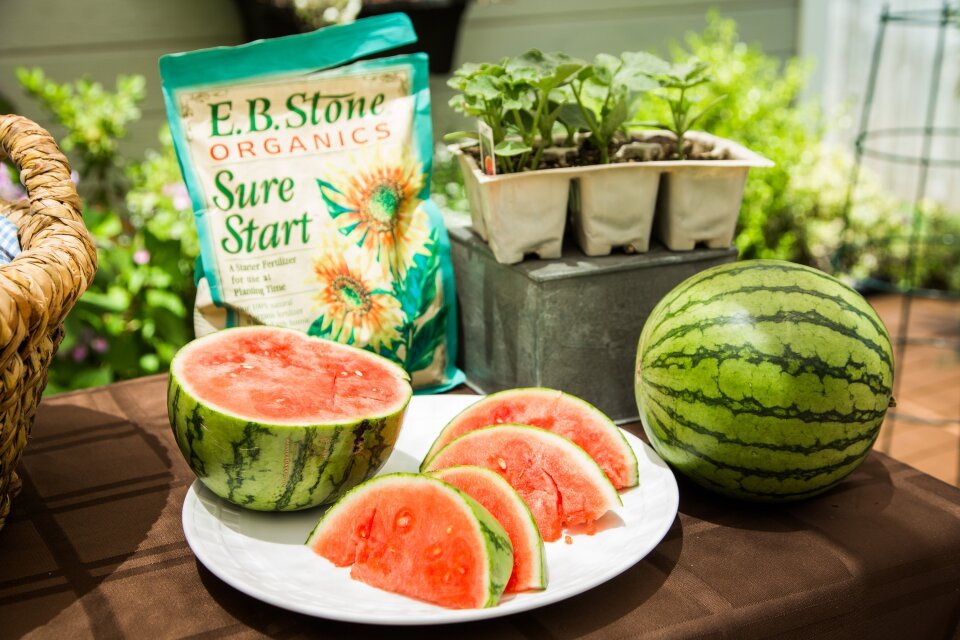
Watermelon plants require attentive care to thrive and produce sweet fruits.
- Watering:
- Water consistently, especially during flowering and fruiting stages.
- Deep watering once or twice a week is preferable to frequent shallow watering.
- Reduce watering as fruits ripen to enhance sweetness.
- Fertilization:
- Apply balanced organic fertilizers or compost during the vegetative stage.
- Switch to a fertilizer higher in potassium and phosphorus during flowering and fruit development to promote sweetness and fruit size.
- Mulching:
- Apply organic mulch such as straw or grass clippings to retain soil moisture, regulate temperature, and prevent weeds.
- Pruning and Vine Management:
- Trim excessive vines to redirect energy to fruit development.
- For mini or container varieties, limit vine growth to manageable lengths to prevent overcrowding.
- Pest and Disease Management:
- Monitor for common pests such as aphids, cucumber beetles, and spider mites.
- Use organic pest control methods like neem oil, insecticidal soap, or companion planting with marigolds.
- Prevent fungal diseases by ensuring good air circulation and avoiding overhead watering.
Consistent care ensures healthy plants, abundant flowers, and high-quality fruits.
Step 5: Pollination and Flower Management
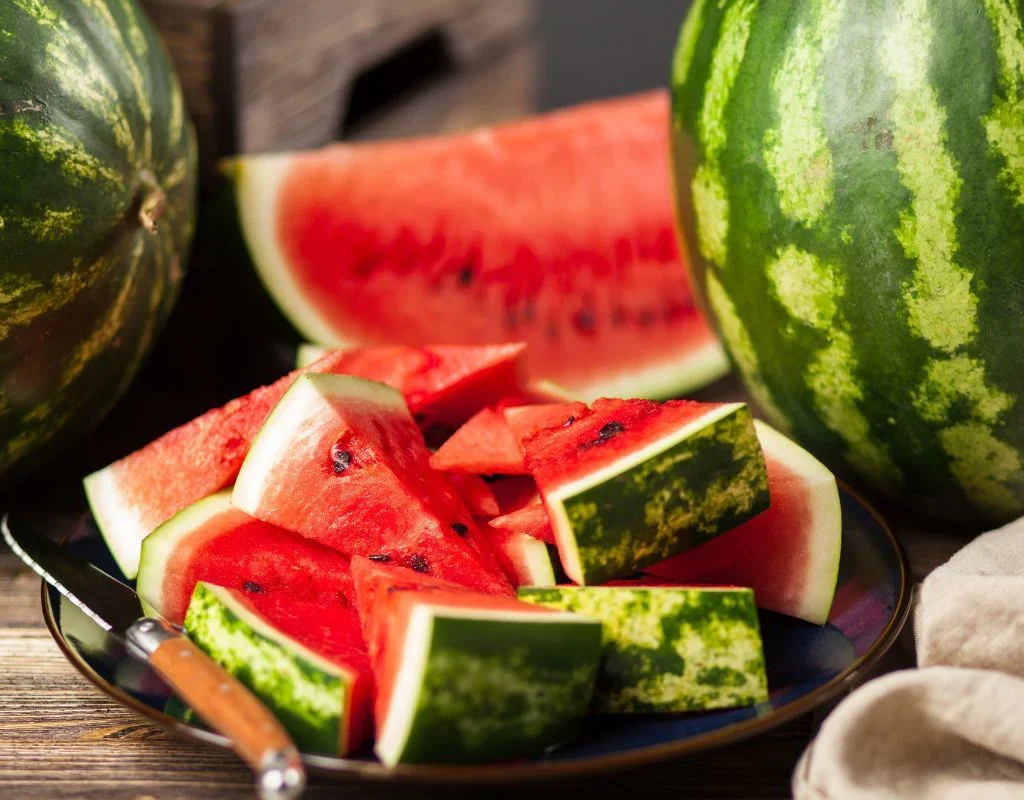
Successful watermelon fruiting depends on proper pollination and flower management.
- Flower Types:
- Watermelon plants produce male and female flowers. Male flowers appear first and provide pollen, while female flowers develop into fruits.
- Pollination:
- Bees and other pollinators naturally transfer pollen from male to female flowers.
- In the absence of sufficient pollinators, hand pollination can be done using a small brush or by gently transferring pollen from male to female flowers.
- Flower Thinning:
- Remove excess flowers during early fruiting to focus energy on a few strong fruits, ensuring better size and sweetness.
Proper pollination is critical for fruit set, while flower management directs plant energy to produce high-quality, juicy watermelons.
Step 6: Harvesting and Storage
Knowing when and how to harvest watermelon ensures optimal sweetness and flavor.
- Signs of Ripeness:
- Color change: The underside of the fruit (ground spot) turns creamy yellow.
- Sound test: Tap the fruit lightly; a hollow sound indicates ripeness.
- Tendrils: The tendril closest to the fruit stem dries and turns brown.
- Harvesting Technique:
- Use a sharp knife or pruning shears to cut the fruit, leaving a few inches of stem attached.
- Handle fruits carefully to avoid bruising, which reduces shelf life.
- Storage:
- Store whole watermelons at room temperature for 1–2 weeks or in the refrigerator for up to 2–3 weeks.
- Cut fruits should be stored in airtight containers in the refrigerator and consumed within a few days.
Proper harvesting and storage maximize sweetness, nutrition, and fruit longevity.
Additional Tips for Home Watermelon Gardening
- Succession Planting:
- Sow new seeds every few weeks to ensure continuous harvest during the growing season.
- Container Gardening:
- Use dwarf or bush varieties in large containers to grow watermelons on patios or balconies.
- Companion Planting:
- Plant watermelons with corn, beans, or marigolds to deter pests and improve soil health.
- Mulch and Shade:
- Protect fruits from sunscald using mulch or temporary shade if necessary.
These practices enhance yield, fruit quality, and sustainability in home watermelon cultivation.
Benefits of Growing Watermelon at Home
- Fresh and Organic Produce: Enjoy chemical-free, juicy watermelons straight from your garden.
- Cost-Effective: Save money on store-bought fruits by growing your own.
- Nutritional Benefits: Watermelons are rich in water, vitamins A and C, antioxidants, and lycopene.
- Educational and Therapeutic: Gardening enhances knowledge, reduces stress, and promotes physical activity.
- Sustainable Living: Growing fruits at home reduces packaging waste and food miles.
Homegrown watermelons offer both health and environmental benefits, making them an excellent addition to any garden.
Conclusion
Growing watermelon at home is a rewarding endeavor that combines patience, planning, and consistent care. By following this 6-step guide—selecting the right variety, preparing soil and space, planting seeds, providing proper care, ensuring pollination, and harvesting correctly—you can enjoy fresh, sweet watermelons directly from your garden.
With proper attention to watering, fertilization, pest management, and seasonal adjustments, even home gardeners with limited space can achieve a successful watermelon harvest. By integrating these practices, you can cultivate juicy, flavorful fruits that not only enhance your diet but also provide a sustainable and cost-effective gardening experience.
Whether grown in a backyard, balcony, or large container, homegrown watermelons allow gardeners to connect with nature, enjoy healthier food, and experience the satisfaction of nurturing plants from seed to fruit.
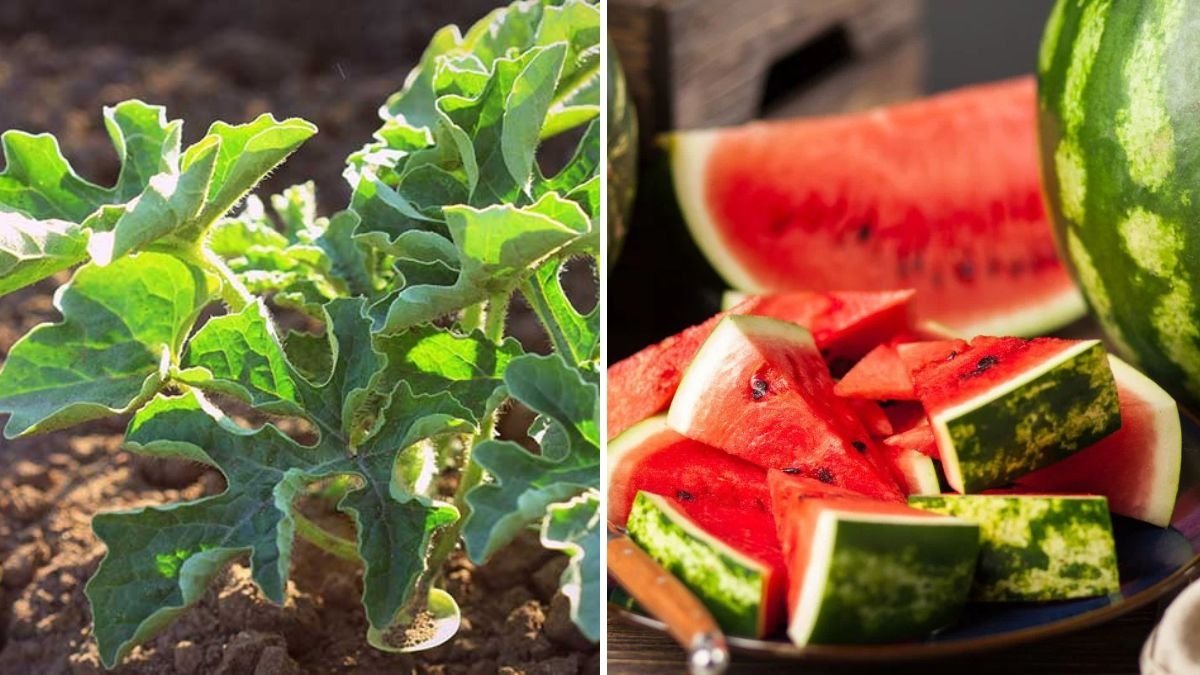
Leave A Comment